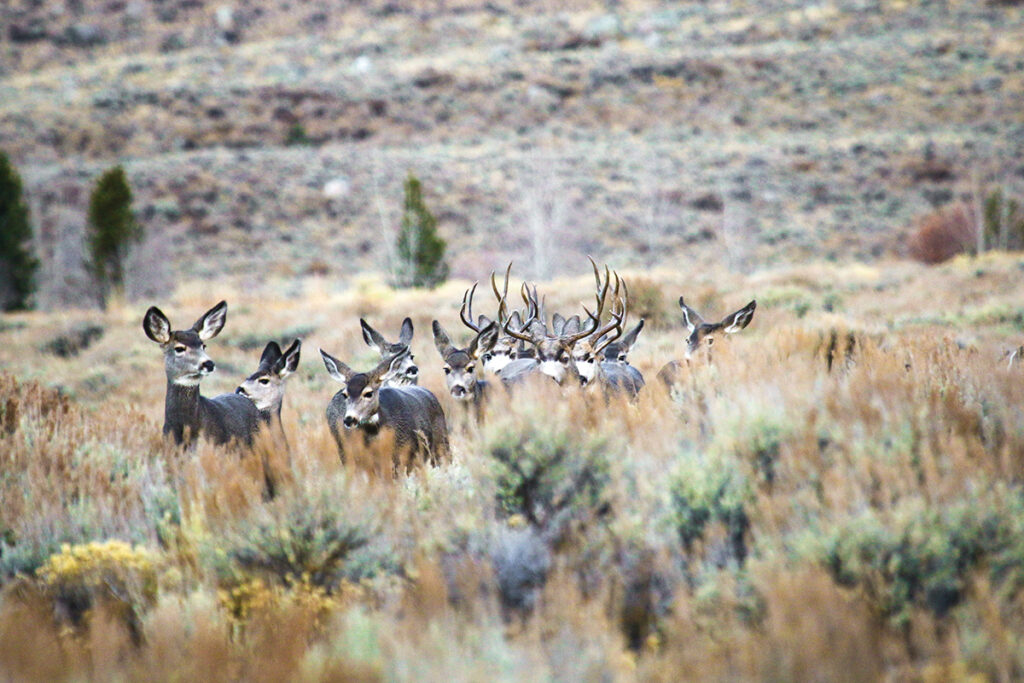This article was originally published in The Bozeman Daily Chronicle.
When a bill to provide landowners with transferable elk hunting tags came before the Montana legislature earlier this year, some hunting groups were quick to condemn it. Many sportsmen saw those tags as a handout to private landowners, while many landowners saw them as a tool to address the costs of elk on their land. The bill was far from perfect, and the proposal was later shelved, but the wider questions it prompted are still very much alive: How can hunters and private landowners work together to conserve wildlife in Montana? And is there a role for transferable hunting tags to play?
The Montana legislature and the Department of Fish, Wildlife, and Parks were right to take transferable hunting tags seriously. As my coauthor Catherine Semcer and I show in a new policy report, if done right, such programs can benefit landowners, hunters, and wildlife. Getting the details right is important, but after studying transferable hunting tag programs in seven western states that have them, we believe the concept has merit. Common criticisms of these programs just don’t hold up.
Montana needs new, collaborative solutions that address the needs of landowners while enhancing wildlife conservation. Drive through Paradise Valley in February and you can see it for yourself—elk rely on privately owned bottomlands, especially in the winter. We all enjoy those elk, but the costs they impose weigh heavily on landowners whose cattle feed is consumed, fences are knocked down, and who stay up at night worrying that the elk-borne disease brucellosis could devastate their cattle and livelihoods.
Thirteen western states, including Montana, give qualifying landowners hunting tags. Of those, seven allow landowners to sell the tags, creating revenues that help counterbalance wildlife-related costs and encourage landowners to voluntarily improve the conservation value of their land. Montana is not currently one of them.
In Montana, it’s common to hear claims that transferable tags would privatize public wildlife, conflict with the North American model of wildlife conservation, or decrease Joe- and Jane-hunter’s opportunity. In reality, these fears don’t hold any water.
Transferable hunting tags don’t privatize wildlife any more than all other hunting permits do. They’re regulated the same way, by a state wildlife agency that has the authority to set eligibility rules, tag quotas, season dates, and weapons restrictions. Most importantly, they don’t guarantee a dead elk—only the opportunity to pursue a live one. In every state that has a transferable tag program, it’s illegal for landowners to fence in, harbor, or otherwise jack up hunter success by limiting the free movement of animals on and off their land.
Transferable tags allow landowners to capitalize on what they already own and have a right to protect: access to their land. Legally, the only people privatizing wildlife are us hunters, who gain ownership of an animal’s body the moment we punch a tag.
Transferable tags also fit neatly within the North American model of wildlife conservation, in part because state wildlife agencies retain their ability to manage wildlife in the public trust, but also because of how common a tool they are throughout the West. Even here in Montana, landowners may not be able to sell tags, but they already receive 15 percent of the limited entry permits in the hunting district they live in through the Landowner Preference Program. Allowing landowners to sell some of those tags would create stronger conservation incentives and wouldn’t have to affect tag quotas.
Lastly, some fear that transferable tags will decrease hunting opportunities by excluding people. That’s hard to imagine in a state where any licensed resident can buy an elk tag over-the-counter. But more to the point, transferable landowner tags don’t decrease hunter opportunity; they unlock access to private lands. And in states like Nevada, transferable tag programs require landowners to allow all hunters to access islanded public lands too, creating more hunting access for everyone.
As far as cost is concerned, sure—transferable tags aren’t cheap. Neither is a trip to Alaska to fill a once-in-a-lifetime moose tag, a guided float down the Smith River, or a family trip to Yosemite. What’s important is what you’re getting for your money and if it’s worth it. Remember: tag prices adjust to what people are willing to pay, turning them into an indicator for hunters of where the best opportunities are.
Implementing a program that makes sense in Montana will take a lot more work. But with lessons from other states to guide us, we can design a program that’s science-based, conservation-focused, and mutually beneficial for Montana’s people and wildlife.




